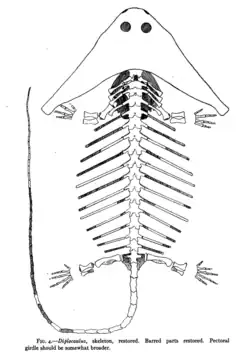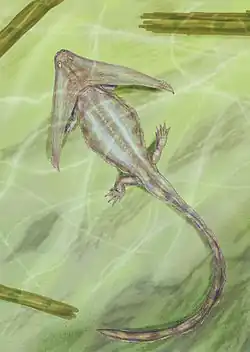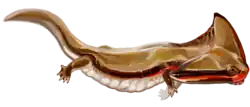Diplocaulidae
| Diplocaulidae Temporal range: Late Carboniferous - Late Permian
| |
|---|---|

| |
| A skeletal diagram of Diplocaulus | |
| Scientific classification | |
| Kingdom: | Animalia |
| Phylum: | Chordata |
| Order: | †Nectridea |
| Family: | † Cope, 1881 |
| Subgroups | |
| Synonyms | |
The Diplocaulidae ("double cauls") is an extinct family of "nectridean" tetrapodomorphs that arose during the Late Carboniferous and died out in the Late Permian. [1] They are distinguished by the presence of strange, horn-like protrusions jutting out from the rear of their skulls; in some genera said protrusions gave their heads an almost boomerang-like outline.

Phylogeny
Below is a cladogram modified from Germain (2010):[1]
References
- ^ a b Germain, D. (2010). "The Moroccan diplocaulid: the last lepospondyl, the single one on Gondwana". Historical Biology. 22 (1–3): 4–39. doi:10.1080/08912961003779678.
